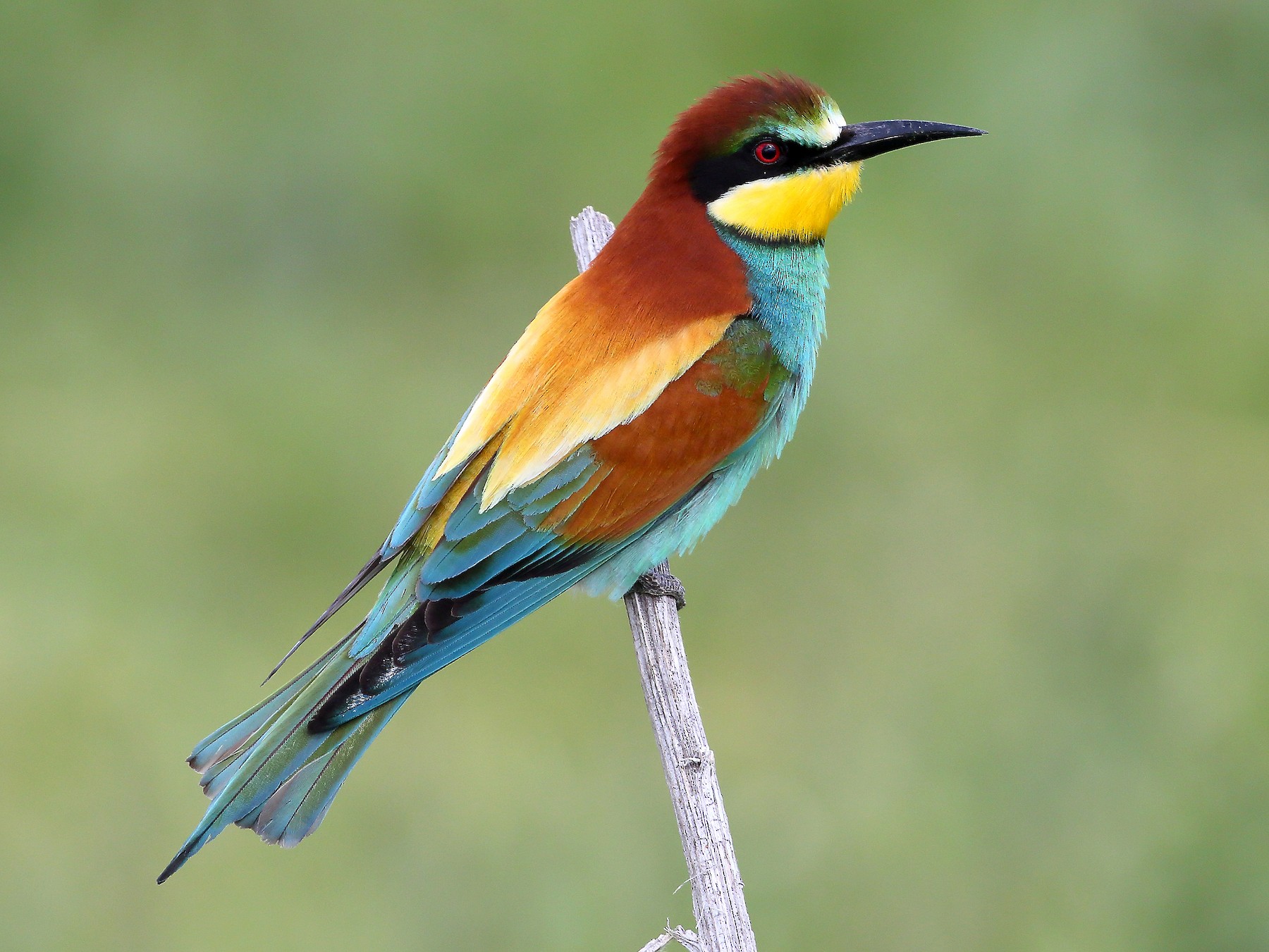The bee-eaters are so named because they prefer to eat bees, wasps, and bumblebees.
Characteristics
What does the bee-eater look like?
Bee-eaters are the most colorful birds found in Europe. This is because they belong to a group of birds native to the tropics: they belong to the corpulent family and are related to our kingfishers. Its back is chestnut brown and its belly is bright blue-green. The throat is yellow and is demarcated from the belly by a black band below. When they fly you can see the rusty brown undersides of their wings.
Their beak is long and powerful. The females are slightly paler in color than the males. The middle tail feathers are slightly elongated and protrude from the tail. Bee-eaters are quite large: they reach 28 cm from beak to tail, but weigh only 50-60 grams.
Where do bee-eaters live?

Bee-eaters live in North Africa and from southern Europe to northern India. But almost every year some bee-eaters also stray to Germany: some pairs have already bred at the Kaiserstuhl near Freiburg (south-west Germany) and even near Hamburg. Although bee-eaters like dry areas such as semi-deserts, steppes, or tree-steppe, they usually live there near the water.
They need steep slopes with soft soil such as clay or loam, or sandy embankments where they can dig their nesting burrows. They are often found on steep river banks or on the slopes of sandpits.
What types of bee-eaters are there?
There are 24 different bee-eater species, found from Europe to Australia. In addition to the European bee-eater, the following are known: the blue-cheeked beetle, the decorative beetle, the scarlet beetle, and the carmine beetle.
Behave
How do bee-eaters live?
Bee-eaters are very social birds. They mostly breed in colonies, meaning pairs breed in close proximity to other bee-eater pairs. For brooding, they burrow 120 centimeters to two meters long into steep slopes, which are widened to form a brood chamber into which the eggs are laid.
Their courtship ritual looks pretty strange: if a bird has found an interesting partner, it lands next to it and violently flaps its wings. Then the two birds make jerky movements, ruffle the feathers on the back of their heads and emit throaty calls. With every movement, the pupils in their eyes narrow. This causes the iris to glow red. From time to time they pretend to smack an insect on their partner’s belly.
This ritual lasts for several days. But they are only a real couple after they have slept close together for a night. Males and females then dig their burrows together by hacking into the ground with their beaks and scraping away the loose soil with their legs.
The construction of such a cave takes one to two weeks. When the cavity is ready, the male feeds the female several times a day, and eventually, mating takes place. Over the course of a few days, the female lays the eggs, which are then incubated alternately by both partners.
In southern Europe, the bee-eaters live as migratory birds and migrate to Africa in the autumn. After the breeding season, European bee-eaters even fly to South Africa and only return in spring to breed.
How do bee-eaters reproduce?

In mid-May, the female bee-eaters lay five to seven eggs in their brood cavity. The young hatch after 20 to 22 days. They are still naked and blind and weigh only three to four grams. When they are five days old, the feathers start to grow. They only open their eyes on the sixth day. After a few days, the young chicks have already grown a lot of quills and almost look a bit like tiny hedgehogs.
To feed, the parents crawl into the corridor of the brood cavity. There the hungriest chick comes towards them and snatches the prey from the beak of the parents. It then crawls back into the brood cavity and the next chick crawls into the aisle. Only three weeks after hatching are they big enough to venture to the burrow entrance and look outside for the first time.
At this age, little bee-eaters are pretty chubby: they weigh up to 70 grams – and are therefore heavier than their parents! Therefore, in the last days before they fledge, fasting is practiced. Just a week after they have stretched their beak out of the brood cavity for the first time, they make their first attempts to fly. In the first few nights, however, they still return to their parents in the brood cave to sleep. Only later do they look for places to sleep in the trees, where they spend the night in groups in a row.
